Wednesday, January 23, 2008, 05:47 PM
- Models
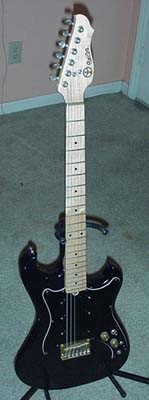
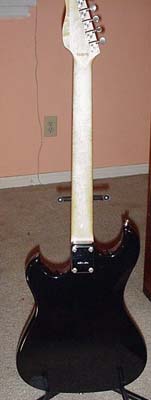
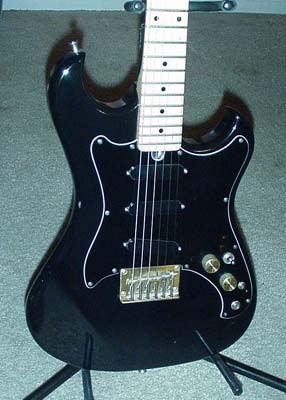
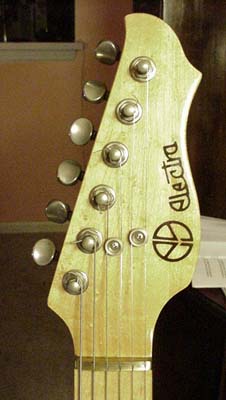
Bolt neck double cutaway with ash body, maple neck, black pickguard, chrome hardware, brass nut, brass hardtail bridge with strings through body, and three single coil pickups with 3-way selector and fat switch (middle on), brass knobs.
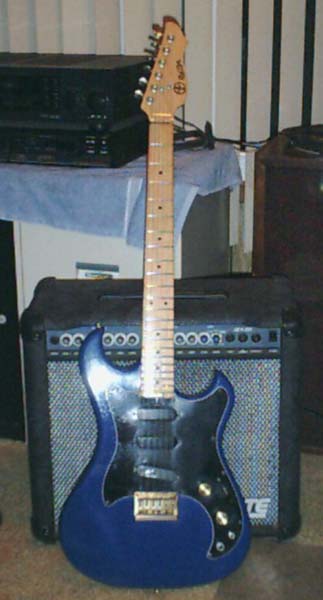
Standard models:
X140N (S-S-S)(natural)
X140S (S-S-S)(walnut stain)
X140B (S-S-S)(black)
Custom models had premium tuners, Canadian rock maple bodies:
X140W (S-S-S)(white)
X140R (S-S-S)(red)
X140BL (S-S-S)(blue)
The X140 was one of the first Electra Phoenixes to appear in late 1980. The standard models have wonderfully resonant figured ash bodies, and the brass nut and hardtail string-though bridge add to the great tone.
X140 is one of the few model numbers to be used by two different models- confusingly the number returned to use in 1985 after the Electra Phoenix had been renamed the Westone Spectrum. (The Spectrum DX was numbered X140, but instead of being an updated S-S-S, the DX was really an H-H like the X135 with the upgraded hardware of an X189.)
From the 1981 pricelist:
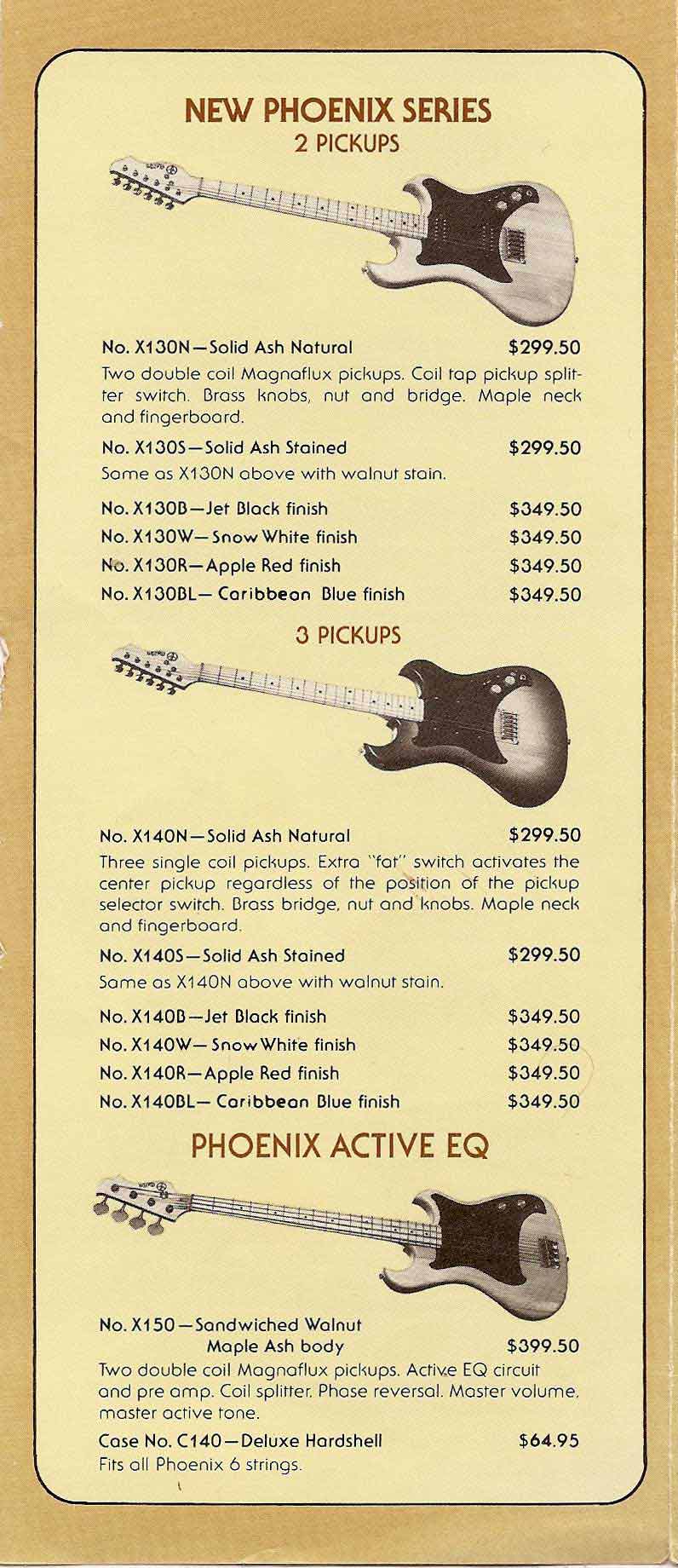
permalink
| related link
Wednesday, January 23, 2008, 04:19 PM
- Models
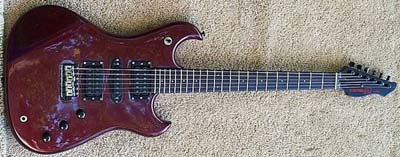
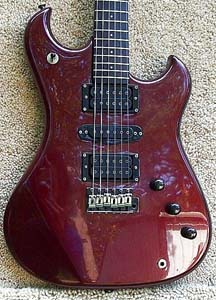
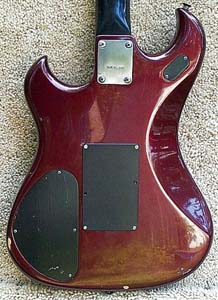
Bolt neck double cutaway with maple body, maple neck, rosewood fingerboard, black hardware, graphite nut and tekglide (vintage style) bridge, two humbuckers, one single-coil pickup with three pull-switch knobs (V-T-T) for coil tap, fat (center on) and phase; and 3-way selector switch.
X185RM (H-S-H)(rose metallic)
X185BL (H-S-H)(blue burst)
X185GR (H-S-H)(graphite)
X185SS (H-S-H)(Silverstone= metallic bronze)
X185RD (H-S-H)(red)
The X185 marked the debut of Tom Presley’s H-S-H wiring plan, the result of his work in the 60’s on experimental wiring. It combined the best of different kinds of pickups to produce a remarkably versatile sound. Best of all, the controls were intuitive, allowing the guitarist to merely twiddle or to very deliberately shape a tone.
Other guitar companies, notably Ibanez, have also released H-S-H guitars, but none with this particular configuration before or since.
The full potential of the H-S-H was also made possible by innovative unbalanced coil pickups that Tom had developed in concert with Matsumoku technicians. Normal humbuckers have a pair of equal coils, and coil tapping one out leaves a single remaining coil that isn’t very much like the rich overtones of a strat or tele single coil, it’s just thin.
The new MMK45 pickups that were included in all the Electra Phoenix had a pair of coils with different cores, magnets, and windings. One coil was wound for rich high frequencies, the other for lower response. The effect was akin to upgrading from a single stereo speaker to a woofer and tweeter- both ends were better represented.
When coil tapped, MMK45’s drop the bass coil, and the remaining treble coil is more like a tele neck pickup- strong and sweet.
By using humbuckers that would coil tap this way, the H-S-H plan spanned a tonal range including those traditionally held by tele and LP players. This was activated by pulling out the volume knob, which in the 83 models was a nice chunky speed knob with notched edges.

The second knob activated the center pickup, which was a strat-like single coil pickup that added the rich piano-like overtones of an overwound single coil. Add that to any of the other combinations and you spanned the tonal range traditionally held by strat players.
Finally, the third knob, which was also the bridge tone knob, pulled out to reverse the phase of the bridge pickup. This was a sound that had suddenly become popular in the 80’s pop radio- think Joe Walsh- although it was a wiring trick that other greats had used. Somebody noticed that if you put the 3-way selector switch inbetween positions on a strat, it phase reversed one of them, giving this funky quack sound.
In 1983, Fender (who had stopped making guitars in America and had licensed to Fuji Gen Gakke in Japan) offered fot eh first time a strat with a 5-way switch so that those sounds could be deliberately selected.
The same year, Electra Phoenix offered the X189 with more wiring variations and tonal range than any guitar before.

Best of all, you could use the variations without understanding them at all. By experimentation you find out, say, that by pulling the bottom two knobs out you get a much wider treble-to-bass range when using the 3-way selector, so you dial that up and go without having to think about what you’ve done or how it works.
What went wrong? Why didn’t such innovation take off as the next great thing? Perhaps it should have. Probably the greatest strike against Electra Phoenix was that it was a $400 guitar. This was halfway between the $125 starters and the $800 and up ‘serious’ guitars. Real rock stars played the serious stuff, we thought.
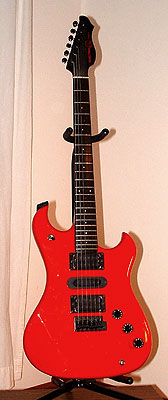
True to SLM’s marketing strength, Electra was a brand that offered top-quality features at a mid-range prices included entry level models with serious student quality, no junk. Today we take it for granted that companies sometimes offer surprising quality in lower priced lines, and sometimes these things become standard.
But in the early 80’s imported guitars were still ‘junk’, and people barely registered that Fender s were made by the same factories as Ibanez. The world was not looking to find innovation in low to mid-range guitars at that point.
And no doubt they were far ahead of their time. The average amateur guitarist in 1983 had no idea about phase reversed guitar wiring, and was skeptical that it really had anything to do with making music. A few did get it, and we treasured our Electra Phoenixes, adn they remain excellent versatile players today.

Wednesday, November 28, 2007, 12:25 PM
- Models
Bolt neck double cutaway with ash body, maple neck, chrome hardware,and dual humbuckers with coil tap toggle switch.First Series:
X135G Green
X135C Champagne (gold)
X135P Purple
X135B Brown
X135S Silver
Second series:
X135NA Natural
Third Series (Westone Spectrum ST):
X135BK Black
X135R Red
X135W White
The first series was a deluxe version of the X130 with special metallic paint and black pickguard like the X130, brass nut, brass hardtail bridge with strings through body, brass knobs.
Most had a brass '1982 commemorative anniversary' plate on the back of the headstock with an additional serial number.
Pictures above courtesy of Darren Costello.
The second series was almost a different model entirely- instead of a pickguard, it had pickups mounted flush against the body, like all Phoenix models to follow:
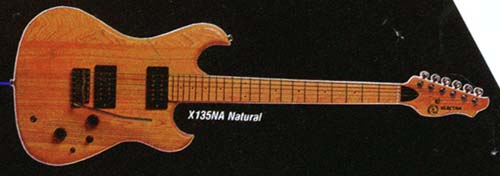
In 1985 the third X135 series appeared with a Bendmaster bridge, under the name Westone Spectrum ST (standard), first only in black, then in 86 red and white were added. Through these three series the X135 became the longest-running model of the Phoenix/Spectrum family.
Wednesday, November 28, 2007, 12:14 PM
- Models
Bolt neck double cutaway with ash body, maple neck, black pickguard, chrome hardware, brass nut, brass hardtail bridge with strings through body, and dual humbuckers with coil tap toggle switch, brass knobs.Standard models:
X130N Natural
X130S Walnut stain
Custom models had premium tuners, canadian rock maple bodies:
X130B Black
X130W White
X130R Red
X130BL Blue
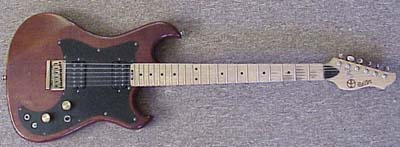
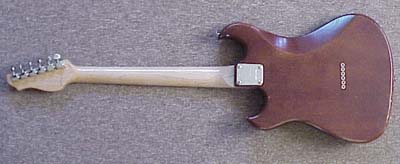
photos courtesy of Tim Root.
The X130 was one of the first Electra Phoenixes to appear in 1980. The standard models have wonderfully resonant figured ash bodies, and the brass nut and hardtail string-though bridge add to the great tone. In later years this model omitted the string-through-body holes.
From the 1981 pricelist:

Wednesday, November 28, 2007, 11:55 AM
- Models
Bolt neck double cutaway with, maple neck, rosewood fingerboard, chrome hardware, vintage style bridge, and single humbucker with one volume knob.(pictures needed!)
With its single pickup, modest vintage style bridge and no tone knob, the X125 is certainly the humblest of the Phoenix/Spectrum family, released at a time when rock and metal players began to favor a single bridge pickup and no tone control, relying entirely on amp and effects for tone shaping.
Back Next






